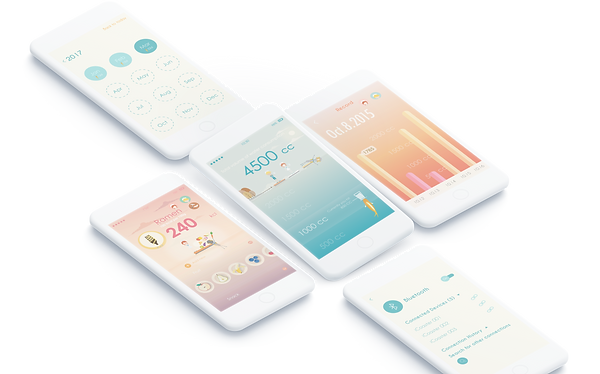My Role
Stakeholder Interview Prototype Design
UX Design Data Analytics
User Interview User testing
UX Design Questionnaire Design
About iCoster /
Pain Points /
Most office workers sit for about 6.5 hours a day, excluding breaks. This sedentary lifestyle leads to low hydration levels, with 75% of office workers failing to meet the daily hydration standard. Chronic dehydration can result in long-term health issues such as sickness and fatigue. There is a desperate need to encourage and sustain proper hydration habits among office workers.
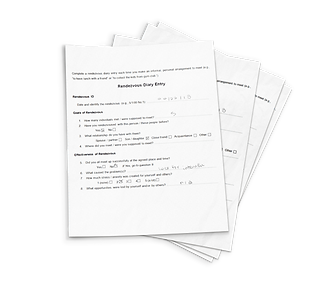
20%
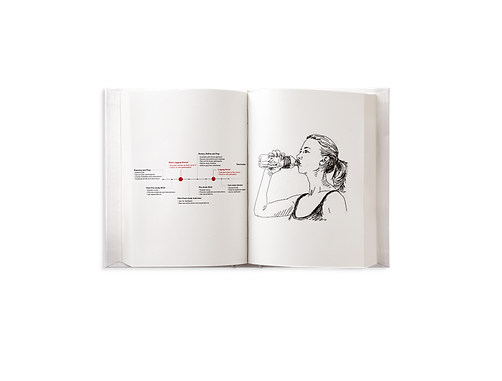
One step closer to user's needs


1 on 1 interview compared to focus group creates an environment where interviewee may feel more easy to speak out truth without being affected by peers. And user's diary tracks down a user's process interns to a designated task given to within a certain amount period. Both do help designer on finding out more user's need to approaching to end users.
1-on-1 Interviews and User Journey /
Interview Approach
-
Target Users: Office workers, easily accessible within our company.
-
Interview Methods: 1-on-1 interviews rather than focus groups to capture personal experiences and insights.
-
Focus groups often yield common agreements but may miss individual nuances.
-
1-on-1 interviews allow for a deeper understanding of personal hydration habits.
-
User Journey Analysis:
-
Office workers' daily activities and habits are crucial for understanding hydration behavior.
-
Individual experiences are varied and must be considered for effective solutions.
Interview Requirements:
-
Number of Interviewees: 14
-
Age Range: 25 to 45
-
Occupation: Indoor workers (preferably office workers)
-
Criteria: Equal gender distribution, long indoor working hours, health-conscious, and open to lifestyle changes.
Online Research & Competitors Comparison /
Solution Concept:
-
A handy gadget integrated with an app to remind users to drink water and achieve daily hydration goals.
-
Competitor analysis revealed that many solutions use gamification to foster habit formation and user engagement.
Key Insights:
-
Gamification provides incentives and rewards, encouraging regular use and loyalty.
-
Successful games use honor programs to clearly outline user goals and rewards.
Data Collection and Key Factor Extraction
Interview Results:
-
10 out of 14 participants struggle with daily hydration.
-
Attempts to improve hydration (water bottles, reminder apps) were generally unsuccessful.
-
Common issues include being too busy or simply forgetting to drink water.
-
Many feel guilty for not meeting hydration standards, leading to a vicious cycle.


Data Collect & Key Factors Extract /.
Interview Results:
-
10 out of 14 participants struggle with daily hydration.
-
Attempts to improve hydration (water bottles, reminder apps) were generally unsuccessful.
-
Common issues include being too busy or simply forgetting to drink water.
-
Many feel guilty for not meeting hydration standards, leading to a vicious cycle.
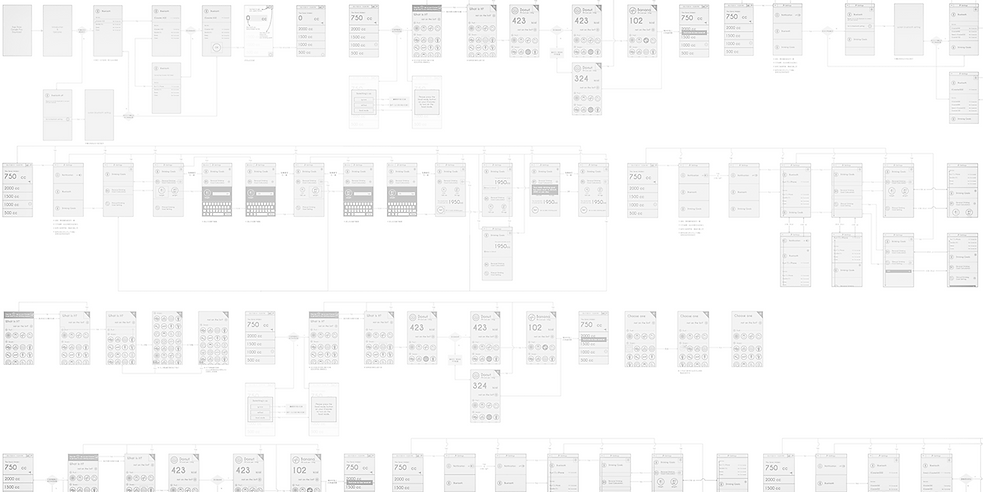
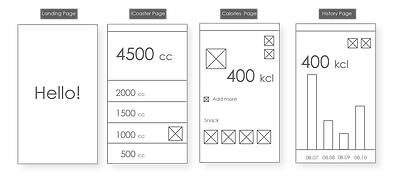
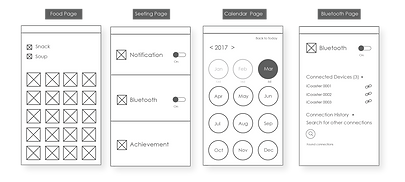
Wireframe & Portotype /.
Design Goals:
-
Solve the problem of inadequate water intake and promote regular hydration habits.
-
Create a simple, goal-oriented system to encourage users to drink water regularly.
-
Avoid stereotypical reminders and focus on an interactive, user-friendly experience.
Operational Steps:
-
Alarm message (system) > Check message (user) > Drink water (activity) > Task checked (user) > Cycle complete (system).
-
Focus on delivering clear alarm messages and tracking water intake.
Design Principles:
-
Clean and comprehensible interface.
-
Minimal steps to maintain simplicity and ease of use.

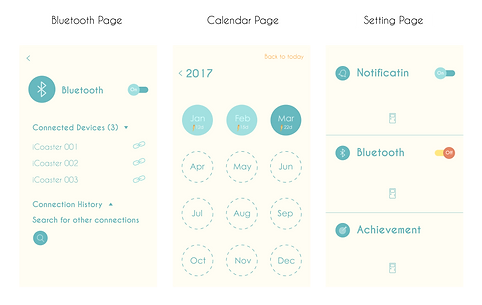
UI Creation /
Early Stage Usability Test & GUI Planning /
Usability Test:
-
Quick validation due to the prototype's simplicity.
-
Focus on interaction to build a bridge between user and system, raising awareness and loyalty.
GUI Design:
-
Color Palette: Ocean blue is the main color, with orange, red, and green as complementary sub-colors.
-
Theme: A narrative theme to guide users through the app, enhancing engagement.
-
Device Integration: The iCoaster app connects to a multifunctional coaster device that measures water intake, weighs food, and detects calories.

User Guidance:
-
Add an instructional page to help users understand the app's functionality and avoid confusion.
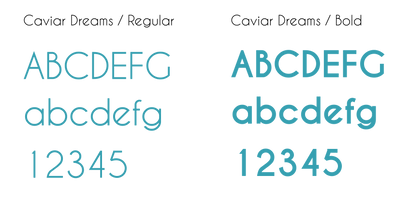
Design Consistency:
-
Fonts: Roboto for English (versatile and readable), Noto Serif for Chinese (consistent with Roboto).
-
Icons: Simple, universal, and intuitive to guide users through the app's steps.


Conclusion /
The comprehensive approach ensures that the iCoaster app effectively addresses the hydration needs of office workers, integrating seamlessly into their daily routines and fostering lasting healthy habits. By focusing on simplicity, user engagement, and clear guidance, the app aims to make hydration a regular and effortless part of users' lives.
